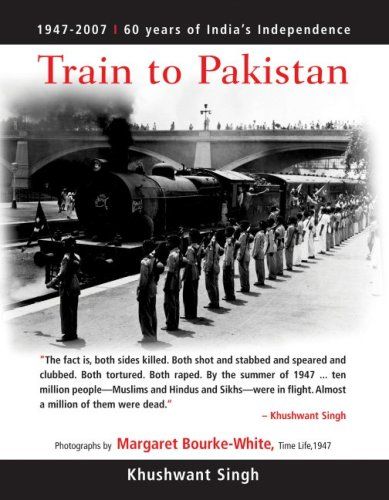Ghosts of the partition
 The carving of India and the subcontinent into tense, clashing nations is, literally, the greatest tragedy of the 20th century that hardly anyone in America knows about. It was a nightmare so hellish that some of its images and stories are simply not mentioned. The denial is that deep. Consider the top of this news report by Rama Lakshmi of the Washington Post, focusing on the latest effort to break the silence and learn the painful lessons of 1947:
The carving of India and the subcontinent into tense, clashing nations is, literally, the greatest tragedy of the 20th century that hardly anyone in America knows about. It was a nightmare so hellish that some of its images and stories are simply not mentioned. The denial is that deep. Consider the top of this news report by Rama Lakshmi of the Washington Post, focusing on the latest effort to break the silence and learn the painful lessons of 1947:
NEW DELHI -- Every year in March, Bir Bahadur Singh goes to the local Sikh shrine and narrates the grim events of the long night six decades ago when 26 women in his family offered their necks to the sword for the sake of honor.
At the time, sectarian riots were raging over the partition of the subcontinent into India and Pakistan, and the men of Singh's family decided it was better to kill the women than have them fall into the hands of Muslim mobs.
"None of the women protested, nobody wept," Singh, 78, recalled as he stroked his long, flowing white beard, his voice slipping into a whisper. "All I could hear was the sound of prayer and the swing of the sword going down on their necks. My story can fill a book."
There are, of course, several clear references to religion in those paragraphs.
Yet the role that religion played in the partition is so huge and so obvious that it is almost impossible to describe in words. It's just there, like a mountain or an ocean.
It is not a simple thing. Muslims slaughtered Hindus. Muslims helped Hindus. Hindus slaughtered Muslims. Hindus helped Muslims. And the amazing thing is that the British -- looking forward to some idealistic age in which religion just wouldn't matter all that much -- tried to act as if religion already didn't matter all that much.
How many people died?
According to conservative estimates, about half a million Hindus and Muslims were slaughtered and 14 million displaced, and about 70,000 women were abducted and raped, leaving both countries with deep psychological and political scars. Riots convulsed the newly independent nations for months as centuries-old communities split apart.
Government documents unearthed by researchers provide chilling details of what happened during partition, as well as alphabetical lists of the names of women who were abducted. Historians and witnesses have said that trains crossing the new border were filled with corpses from either side.
If anything, this report underplays the religious elements of the conflict. That's amazing, yet I have to admit that I have no idea how a journalist could cover this topic in an ordinary A1 news feature.
It's just too big. It's just too painful. And, at times, it seems that not much has changed.
Thus, the ghosts remain -- past and present.